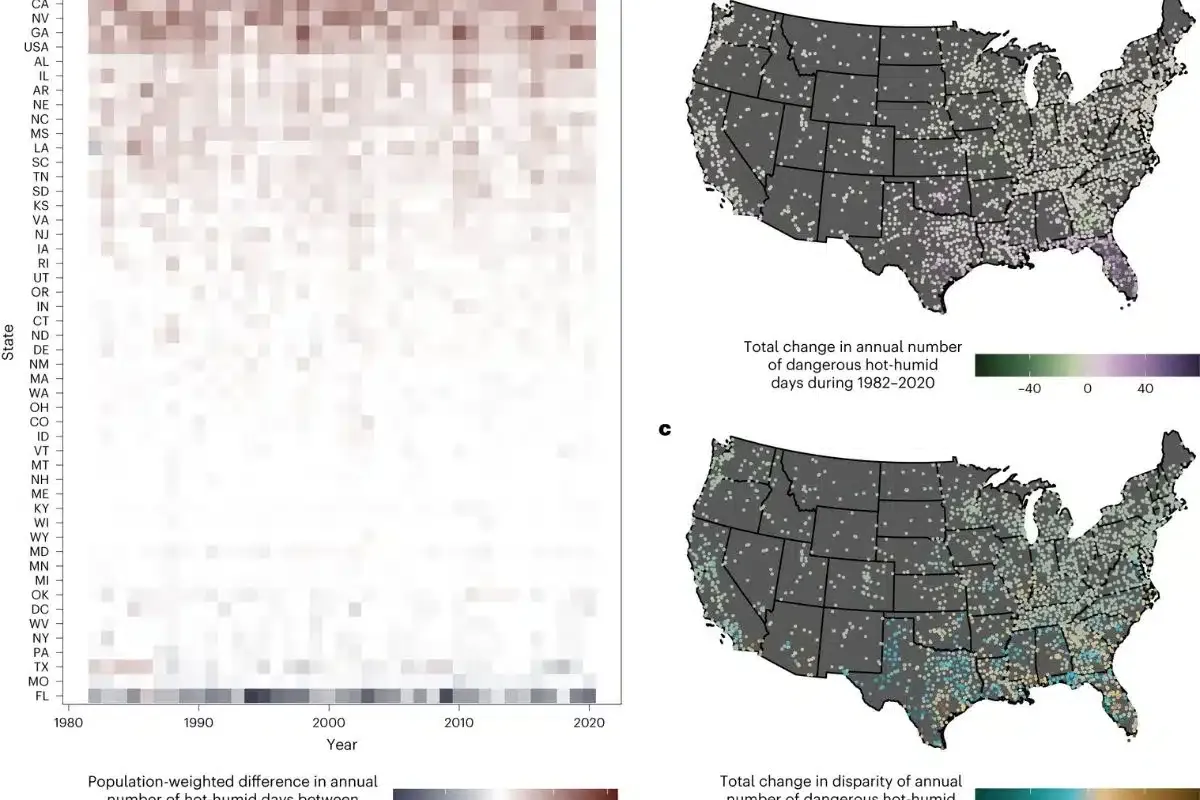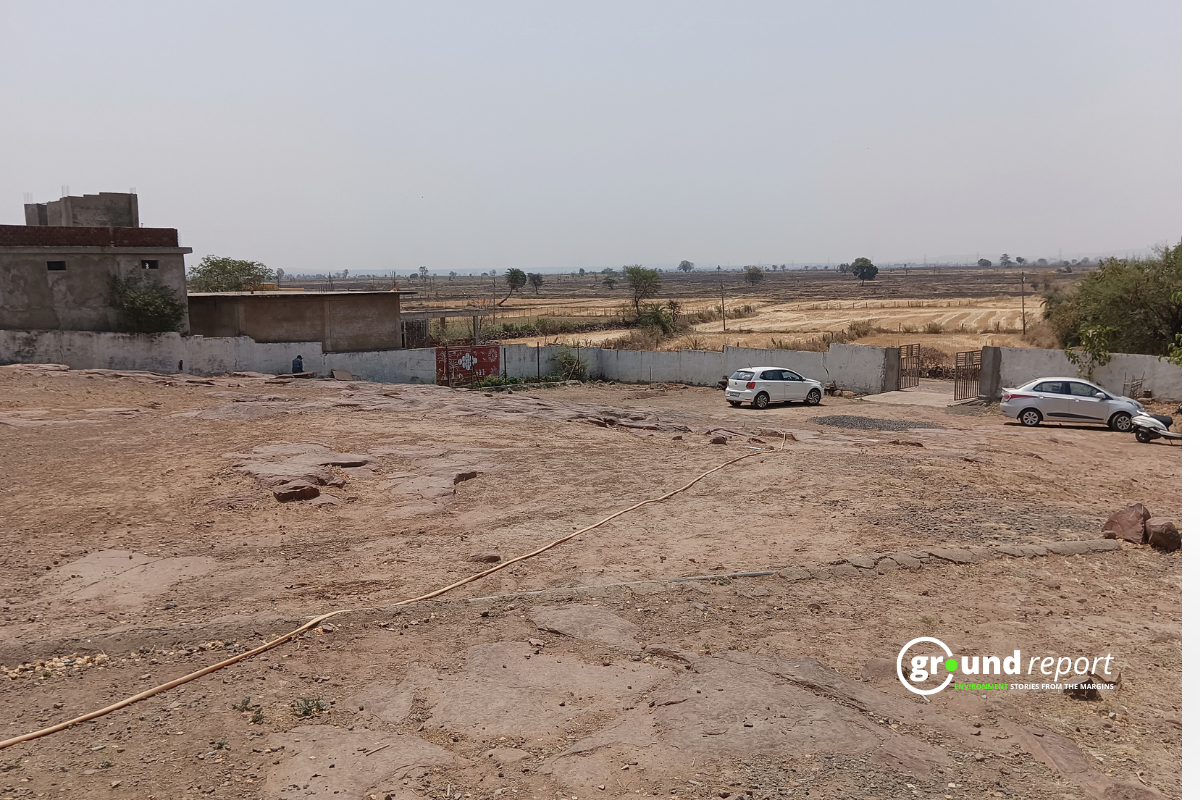A new study reveals that prisoners in the United States are exposed to dangerous levels of heat and humidity, putting them at risk of serious health problems and even death.
Prisoners suffer from extreme heat
The study, published in the journal Nature Sustainability, estimates that 1.8 million incarcerated people have been recently exposed to these conditions, and on average experience 100 days of them each year. The situation is worse in the 44 states that do not provide universal air conditioning to inmates, and in the south, where climate change is causing more frequent and intense heat waves.
The researcher used data from the PRISM Climate Group to measure the number of days with a heat index above 90°F (32°C) in 6,000 carceral facilities across the U.S. mainland from 1982 to 2020.
The heat index is a measure of how hot it feels when humidity is factored in with the temperature. The researchers also used data from the Bureau of Justice Statistics and the Prison Policy Initiative to estimate the number of people incarcerated in each facility.

“Exposure to excess heat and humidity can lead to deadly heat stroke and kidney disease from chronic dehydration, among other health issues, for incarcerated people in the United States,” says first author Cascade Tuholske, Ph.D., assistant professor of Human-Environment Geography at Montana State University.
“The majority of these exposures are happening in state-run prisons and jails in southern states that do not legally mandate access to air conditioning for the incarcerated. It is concerning because climate change is amplifying dangerous heat extremes in these locations.”
The researchers found that more than half of all dangerous heat and humidity exposures in the U.S. took place in Florida and Texas, where 12% of the incarcerated population accounted for 52% of exposure.
Some prisons very hot, humid
The worst facilities experienced dangerous heat and humidity between one-fifth and one-third of the year, with the Starr County Jail in Rio Grande Texas experiencing the most: 126.2 days per year on average. Areas with jails and prisons experienced 5.5 more dangerous humid heat days annually compared to other locations without carceral facilities, and carceral facilities in Arizona experienced the most rapid warming.
Nearly a million incarcerated people were housed in facilities seeing an increase in dangerous humidity and heat, with carceral facilities in Florida experiencing the greatest increase: 22.1 more days in 2020 compared to 1982.
The researchers warn that exposure to excess heat and humidity can lead to deadly heat stroke and kidney disease from chronic dehydration, among other health issues, for incarcerated people in the U.S. They also note that incarcerated people are disproportionately susceptible to dangerous humid heat given preexisting health conditions, such as mental illness and high blood pressure, and the use of medications that can impair the body’s ability to regulate heat and cool itself down.

“Senior author Robbie M. Parks, Ph.D., assistant professor of Environmental Health Sciences at Columbia University Mailman School of Public Health says, “People have largely ignored the dangerous heat impacting incarcerated people, partly because they perceive their physical suffering as justified.”
“Laws mandating safe temperature ranges, enhanced social and physical infrastructure, and focused health system interventions could mitigate the problem. Doing so is critical for incarcerated people, who have severely limited social and political agency.”
Heat risks ignored for inmates
The researchers argue that people have largely ignored the dangerous heat impacting incarcerated people, partly due to the perception that their physical suffering is justified. They call for laws mandating safe temperature ranges, enhanced social and physical infrastructure, and focused health system interventions to mitigate the problem. They also stress that doing so is critical for incarcerated people, who have severely limited social and political agency, and for the protection of human dignity and rights.
The study is the first to provide a comprehensive assessment of the exposure of incarcerated people to dangerous heat and humidity in the U.S. and to highlight the role of climate change in worsening the conditions. The researchers hope that their findings will raise awareness of the issue and inspire action to improve the lives and health of incarcerated people.
“Edward Markey, the Democratic senator representing Massachusetts, introduced two bills to tackle deadly heat, including the End Solitary Confinement Act. This act aims to prevent exposing incarcerated individuals to extreme heat, often in small, poorly ventilated cells.”
Markey said, “Extreme heat is posing an extreme health risk to people all over the country, necessitating a national response that addresses the dangers that rising temperatures pose to incarcerated people. We cannot give priority to the climate until we prioritize justice, so we must ensure the protection of our most vulnerable communities from extreme temperatures by passing my legislation.”
The study, conducted by researchers from Columbia University Mailman School of Public Health, Montana State University, University of Kansas and University of California, Los Angeles (UCLA).
Keep Reading
Part 1: Cloudburst in Ganderbal’s Padabal village & unfulfilled promises
India braces for intense 2024 monsoon amid recent deadly weather trends
Support us to keep independent environmental journalism alive in India.
Follow Ground Report on X, Instagram and Facebook for environmental and underreported stories from the margins. Give us feedback on our email id greport2018@gmail.com.
Don’t forget to Subscribe to our weekly newsletter, Join our community on WhatsApp, and Follow our YouTube Channel for video stories.







